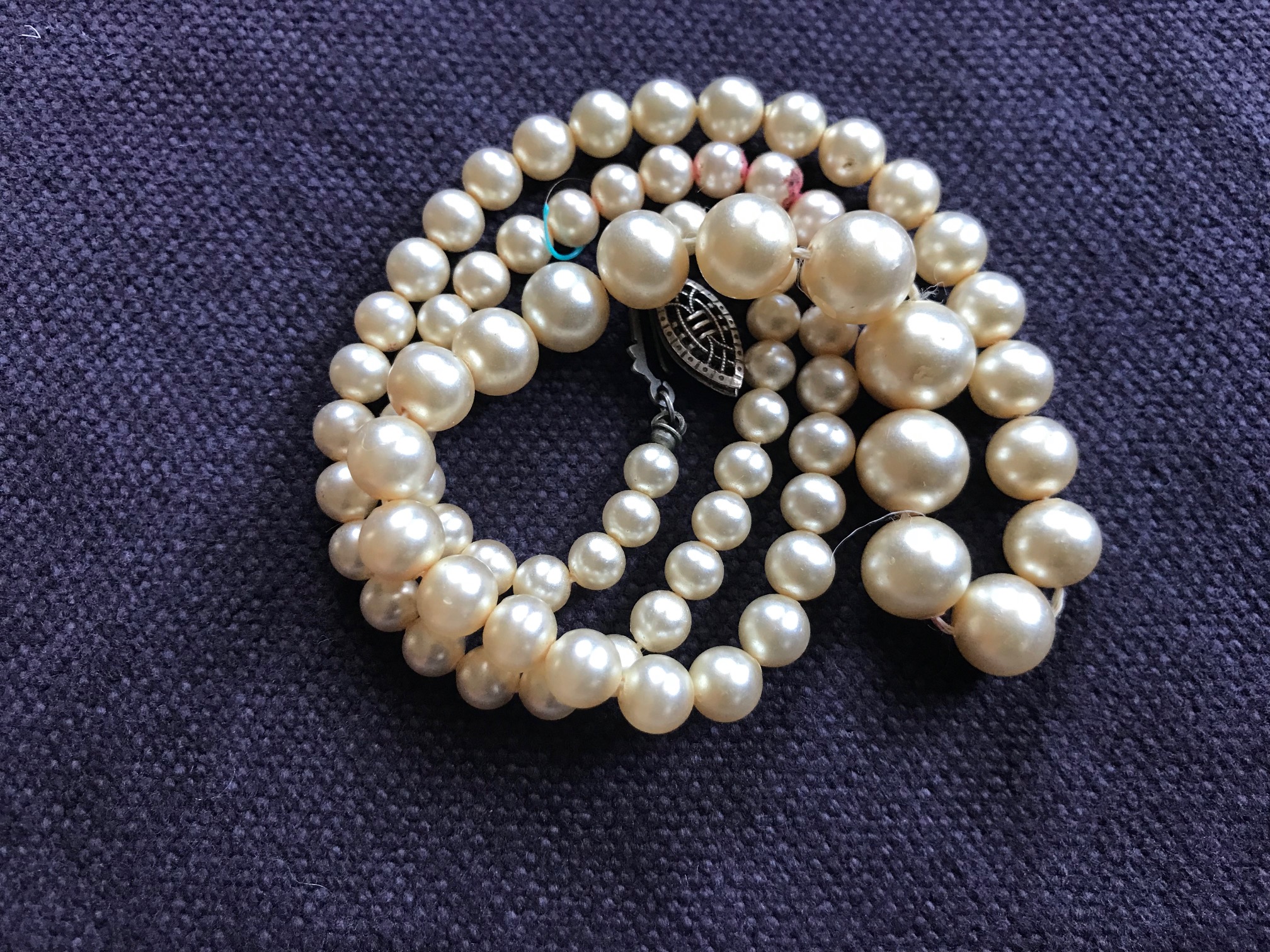Vintage faux pearls: 125,700 ppm Lead. 90 ppm is unsafe. Please don’t let your children play with grandma’s faux pearls!
For those new to this website:
Tamara Rubin is a multiple-federal-award-winning independent advocate for childhood Lead poisoning prevention and consumer goods safety, and a documentary filmmaker. She is also a mother of Lead-poisoned children (two of her sons were acutely Lead-poisoned in 2005). Since 2009, Tamara has been using XRF technology (a scientific method used by the U.S. Consumer Product Safety Commission) to test consumer goods for toxicants (specifically heavy metals — including Lead, Cadmium, Mercury, Antimony, and Arsenic). Tamara’s work was featured in Consumer Reports Magazine in February of 2023 (March 2023 print edition).
Grandma’s faux pearls are not safe!
Since there are no maker’s markings on these pearls, I will do my best to describe some of the qualities that cannot be seen in a photo:
- These look and feel like real pearls to an untrained eye.
- They are an off-white/ cream color, and heavily weighted.
- They are also strung as a graduated strand — however, they are not individually knotted.
- The clasp looks like it might be made of Silver.
- Because they are heavy, they sort of clink when they drop together (onto your hand or onto a table).
All of these qualities make them seem real. Don’t be fooled, however! These pearls are Leaded glass and — based on my experience — are also likely painted with high-Lead paint to achieve their “almost real pearl” finish!
What was the exact XRF reading of these pearls?
When tested with a high-precision XRF instrument, these pearls came in at 125,700 ppm Lead (Pb) (+/- 5.8k ppm).
They were negative (Non-Detect) for:
- Cadmium (Cd)
- Arsenic (As)
- Mercury (Hg)
How much Lead is “too much” Lead?
Federal agencies have all acknowledged the long-held consensus within the medical and scientific search community that — in terms of childhood exposure — there is no “safe” level of Lead. Under current U.S. Federal regulations, Lead is considered toxic (and illegal) in newly manufactured items “intended for use by children” at 90 ppm Lead and higher in the paint, glaze, or coating, and 100 ppm or higher in the substrate. A reading of 900 ppm (10x the Federal limit) would be very dangerous. Meanwhile, 90,000 ppm Lead (1,000x the Federal limit, and equal to 9% Lead) would be considered incredibly toxic by any and all standards. At 125,700 ppm Lead, these faux pearls are more than 12% Lead.
Why is this a problem?
Aren’t they “just” worn around the neck?
How could they cause harm?
My concern with costume jewelry like this is that children (or even older teens and young women) are often seen with strands of pearls pulled up from their necks and partly draped in their mouths as a fidget. It’s a very commonly observed behavior — even if you don’t think you would be likely to do that yourself. Of course, it is never a good idea to put anything that might contain any Lead in your mouth. Additionally, for the faux pearls that are often painted with high-Lead paint (and therefore, often even test positive with a reactive agent swab test), the micro-dust from the paint can easily transfer onto the wearers’ hands — especially considering the age of many of these pearls (often vintage items made in the 1940s and 50s).
#SimpleSolution, #SaferChoice:
Buy only REAL pearl necklaces (modern real pearls actually can be found in fairly inexpensive options!), ideally with real Sterling Silver clasps. Alternately, choose necklaces with natural stones. (Here is an article with more information about that!)
As always, please let me know if you have any questions!
Sincerely,
Tamara Rubin
#LeadSafeMama
Never Miss an Important Article Again!
Join our Email List









